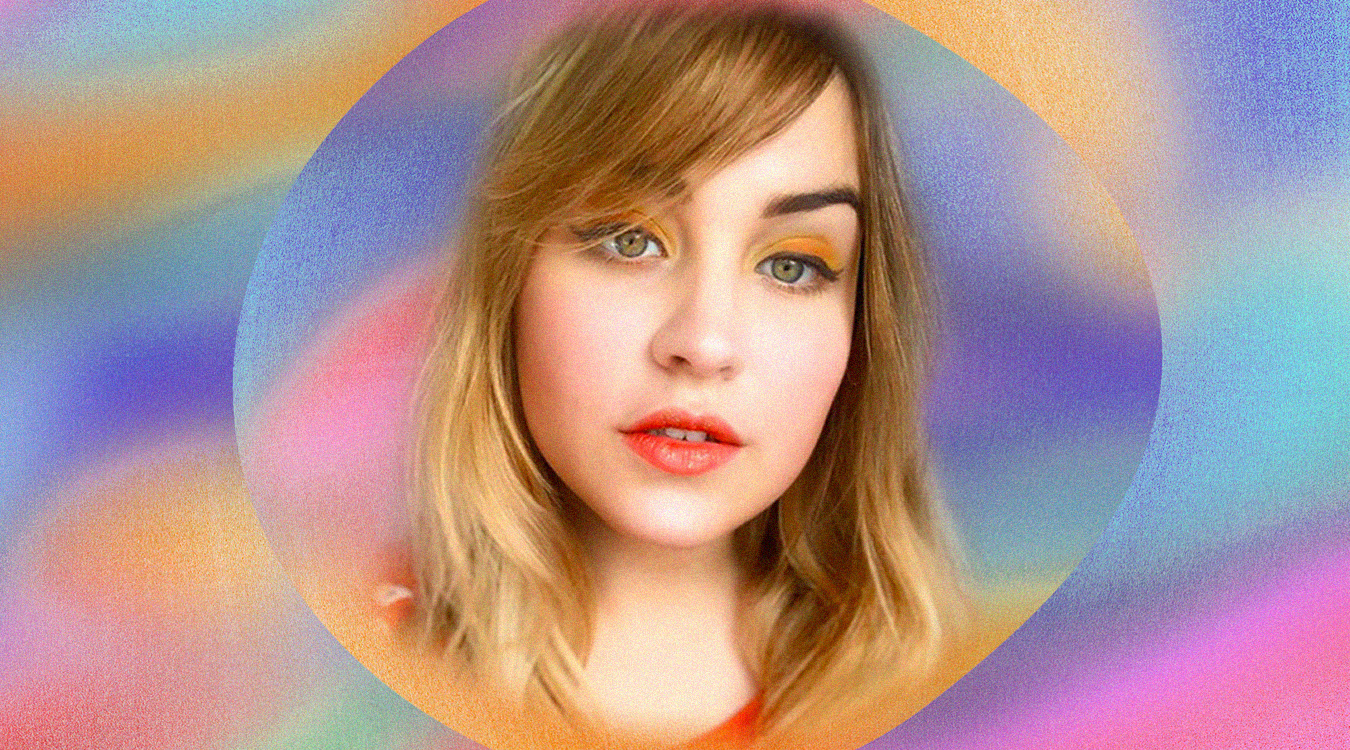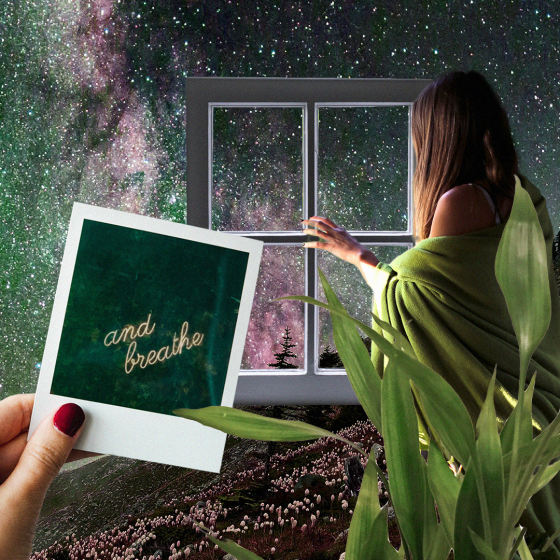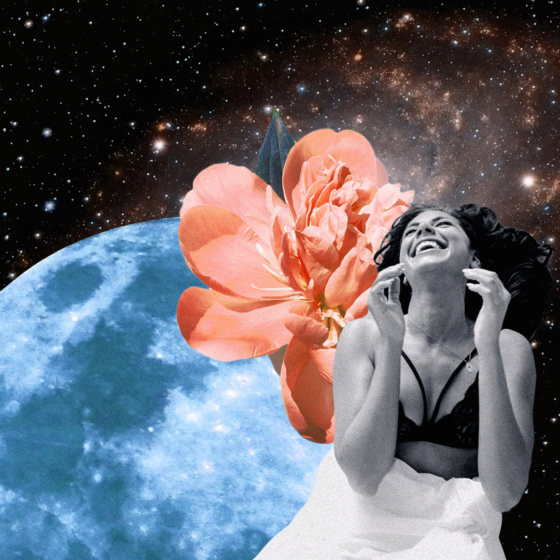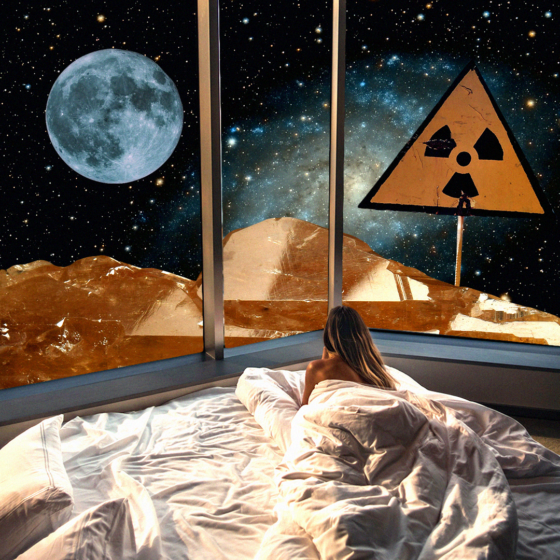Jess is surrounded by four men who are arguing about whether she actually likes them or not.
Each one shares their thoughts, often they’ll talk over each other. Anyone would be overwhelmed, but Jess tries to appease all four of them. Ollie, aged 17, makes an impassioned plea for harmony. While Jamie, aged 30, attempts to reassure his partner Ed. Jake, a cheery Californian, looks serious. He wonders out loud whether this is a healthy debate. Tensions are rising. Jess, as usual, is trying to manage all four of these big personalities. But, this situation isn’t unusual for her. In fact, this is a glimpse inside her day-to-day life.
Jess’s YouTube channel, Multiplicity and Me, has nearly 200k subscribers. You can also spot her work on the BBC, where she has worked with several filmmakers to create documentaries about mental health. On top of that, she’s a parent to a two-year-old daughter.
Jess experiences dissociative identity disorder, something she has spent the past seven years educating the internet on. Dissociative identity disorder (DID), previously known as multiple personality disorder, is where an individual experiences the presence of other identities. Often, each have their own distinct personality, voice and feelings. Jess lives with four alters (altered states of consciousness): Jake, Jamie, Ollie and Ed, who you can meet in this video. Together, these alters are collectively known in the DID community as ‘a system’.
It’s no secret that digital editor Charlotte is a huge fan of Jess’s work and she was over the moon to be able to sit down for a (virtual) coffee with Jess, the creative mind behind Multiplicity and me.
OK, so let’s start with your diagnosis journey, how was that for you?
From around the age of 15, I’d been in and out of support. I knew that there were people existing in my head, so about a year into treatment, I broached the subject with my therapist. By this point, I trusted her enough to finally ask ‘do you believe me?’ And, she said no. It was devastating.
I think because, on the surface, I was high functioning, you know? I just wasn’t taken seriously. But, underneath I was really struggling. It was getting really hard to manage. I was left to continue to find ways to manage myself. But, as I started at university, all of my alters wanted their own space. They began ‘fronting’ (which means they are in control of my body) regularly. Jamie and Jake would go to my lessons for me. I was simply a passenger.
Because of this, my grades were here, there and everywhere and a tutor sat me down and explained she was concerned. And, so was I, my life was literally disappearing before my eyes — I was losing days, weeks and even months at a time – I’d blink and more time would disappear. My tutor was the first person to listen to me and appreciate what I was trying to tell her, and she explained I needed an on-paper diagnosis to access any support, and that perhaps I should find a treatment centre that could help me gain some insight.
I’d been trying to search my symptoms for a while, but they were really difficult to describe; I was very confused about my gender, my sexuality, and who exactly “Jess” was, so imagine trying to type that into a search engine? I ended up discovering DID by complete accident. I was actually reading about schizophrenia and there was a line that advised it ‘wasn’t to be confused with DID’. When I saw what was written, I was shocked!
Everything on that page seemed to be about me. From there I found a specialist and finally received an answer: yes I had Dissociative Identity Disorder – at least now, after all this time, I had a name for what I was experiencing.
Was it a relief in some ways to get the diagnosis?
It was such a mix of relief and panic. But, then I started to wonder about the next steps – you know, what does this actually mean for my life? I started researching more and more, and what I saw on the internet were people wrapped in straight jackets. Would I end up like them? Would I have a job? A relationship? Should I just give up now?
I was lucky to have a psychologist and a psychiatrist, who both explained that people with DID can have careers; they were doctors and lawyers. I realised that while there were people thriving with DID, they just weren’t that visible.
What made you want to start a YouTube channel?
Well, once I had my diagnosis, I had this new-found confidence. I can live a normal life. I wanted to be that representation. I might have this disorder, but that’s not all I am. And, for me, I thought about how I function with it, I could be a better representation for young people who also start googling their symptoms. They could see that [people with DID] exist and we’re not in straight jackets.
I started creating video diaries to help my alters communicate, and I found speaking to the camera was so easy. It’s like there’s no one else in the room. I checked in with the boys and we were all happy to start sharing these parts of ourselves. There was a period where Ed didn’t want to be on camera, which is, of course, completely fine. So, we agreed that we’d give him some space. It’s just about regularly checking in and ensuring that we’re all still happy.
The biggest challenge was finding the line between creating content that was both personal and professional, I wanted to show the day-to-day challenges. But, I didn’t want it to be sensationalised. I wanted people to see the facts and the person behind DID. That it protected me, but, it’s also a huge challenge.
So, let’s talk about your biggest project: the 360 Headspace Video. How did you come up with the idea?
When you have so many people in your head, all with their own conflicting thoughts and feelings, it can be tough to actually hear yourself think. I really wanted to bring this into the ‘real world’ by putting my alters in ‘real’ bodies, so other people could see what it’s really like.
I started jotting down segments of conversations, Jake and I were just keeping almost verbatim notes. And, a few weeks later I edited it into more of a script. Conceptually speaking, the 360 view was essential to showing the reality of DID. This immersive view of being completely surrounded – noise building up around you and that feeling of being overwhelmed.
What about the actors? How did you find them?
Well, the BBC actually did the hard work for me!
During the documentary I did with them, they basically approached me with this list of actors and they were all so perfect. The only one they didn’t have was Ollie, so I selected him. But, I think all of the actors that were chosen really understand the boys. Especially given that it’s such a tricky role to play – they were all just amazing.
When we met, we all met as a group and connected so quickly. The boys also met the actors that played them and that was such an interesting experience for all of us.
On the day of the project, I was really out of it. But, all of the actors were so kind and lovely. We’d also rehearsed it slightly differently, so there was a point where Tom (who played Ed) took the direction differently. The reaction I had was real – I really felt his anger. And afterwards, he was so lovely – but, it was such an honest performance.
You’re in trauma therapy, how has that experience been going through it as a system?
Honestly? It’s traumatic in its own way, but you know it’s the right time – you feel ready.
We were having so many PTSD reactions and we tried to listen to our body like it was saying “I need to be heard”, so we went with it rather than pushing it away.
So, there are two different approaches with DID. You either seek healthy multiplicity, which is where you and alters exist together in a way that’s healthy. Or, you seek final fusion – which is essentially going back to being ‘one person’. Both are completely valid and it’s a personal choice – depending on the patient and their experience.
I describe it as right now, we’re in a neighbourhood. Our houses are next door and there’s a big fence in between. Healthy multiplicity means there are no fences, you still have to pop round, but it’s easy to nip over and access who you need. If you’re seeking final fusion, then you all move in together.
Final fusion is not for everyone, but recently, we decided that it’s what we wanted. There’s a lot of fear involved and some of the DID community feel that I’m betraying their trust by seeking it. Because for years, final fusion was seen as the only solution – it’s ‘not normal’ to be more than one person and it was heavily pushed as the ‘only way to get better’.
But, as a community, there’s been a shift into simply living well – multiple or not. For us, final fusion feels like the right step.
DID is often caused by childhood trauma. And, due to the nature of the disorder, most people who experience DID tend to lack childhood memories of any kind. So, there’s been a lot of PTSD involved because I’m finally getting my memories back. It’s hard, not having any memories, good or bad, from when I was a child.
Not understanding what shaped you; what made you, you. I expected this hypnotic process, where it would all just come out, but it’s not. It’s more like having a guide to help you find the jigsaw pieces that make you whole.
This wasn’t who I was supposed to be. And living with that every day is traumatic in itself.
I keep thinking that I wasn’t supposed to be this way. If what happened to me hadn’t happened to me, I wouldn’t be like this. This wasn’t who I was supposed to be. And living with that every day is traumatic in itself.
You’ve taken part in some really tough conversations online. Especially from people who question the validity of what you experience, how has that been?
You know, it’s actually helped shape us. It’s a reminder to not overshare online, but, more importantly, it’s why we started putting this out there in the first place. Showing a real face to DID – that we’re not axe-wielding murders, we’re like you. And, there needs to be better education around mental health, so that everyone understands it.
But, I never intended to become ‘the DID YouTuber’, I wanted to be a drop in ocean in the conversation about stigma and I’m so glad I feel like we’ve got the conversation going! More and more people are sharing their stories and we are making waves through media and public perception. And that’s honestly incredible!
So, what’s next for you?
Firstly, I’ve got a new documentary coming out soon. I can’t say too much about it, but I’m really excited. I’m also at the start of my funding journey for another project which will be akin to Black Mirror’s Bandersnatch – demonstrating the tough choices that we have to make a system. You can either make a decision that benefits you, or one that benefits all the alters. For example, Ed drinks black coffee. I don’t. While having a coffee benefits him, the rest of us aren’t happy. This is just a small example of the day-to-day decisions we have to make as a system and it’ll be up to the viewer to make these choices as it’ll be just another way to conceptualise what it’s like having DID and managing a system.
I’m working on funding and creating that at the moment. I love looking at new ways to tell mental health stories.
In terms of YouTube. I think we see ourselves winding the platform down, it’s not something we want to do forever, we’re just so humbled we’ve been able to create such a movement of people not being afraid to share their experiences openly.
*Cue devastated noises from Charlotte*
Honestly. It’s for the best, don’t worry – I’ll be going out with a bang.
But, I’m currently working with a clinical psychology team while working on my qualifications. And, as soon as funding comes through, I hope that that’s where I’ll be. I’ve been really lucky to be given such lovely feedback and I plan to specialise in dissociative disorders and maybe even set up my own specialist centre.
I hope that one day someone who’s experiencing the same symptoms as I had will end up in my office. They’ll sit down and tell me their story and I’ll be able to offer them the help that they need.
Interested in seeing more from Jess? Head to her Patreon to support more creative projects.









